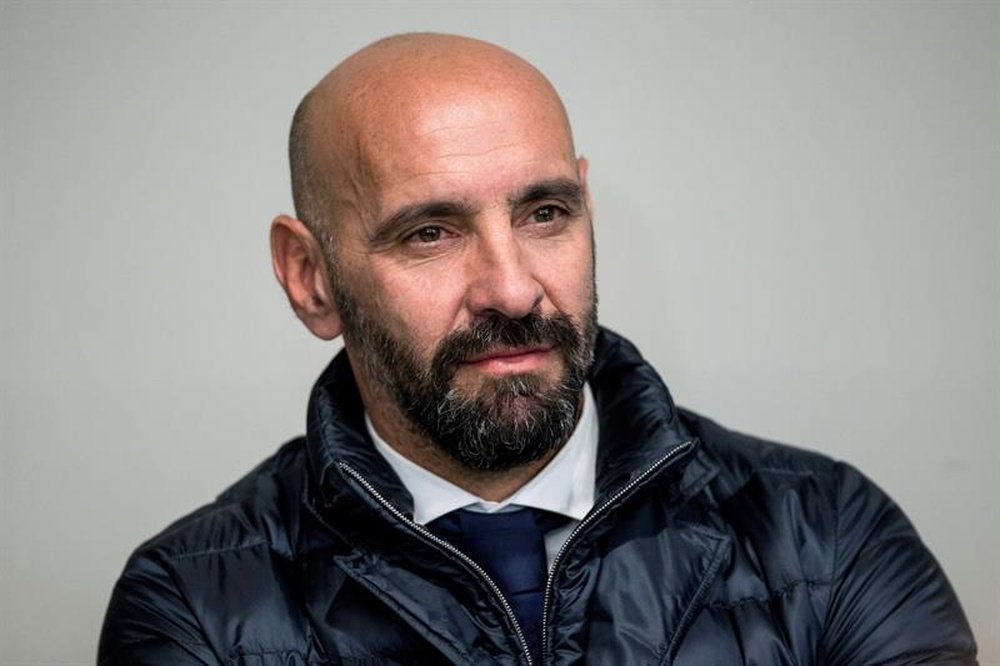In the last ten years, data analysis has become an essential part of the operation of modern football clubs. As the industry evolved, complex metrics have appeared, and they give us more precise insights into the teams’ and players’ performance. Using these metrics has become essential in scouting and recruitment, but also in opponent analysis. Thanks to the affordable data providers and data visualization platforms, some data sources are available for free, so with time and determination almost anyone can join the industry.
In the beginning of the 2010s data analysis entered a new era. Clubs got an immeasurable amount of data, which led to new positions and, in some cases, departments. To this day Liverpool have been considered the most revolutionary club in modern football in this regard. They hired Ian Graham, who holds a PhD in theoretical physics from the University of Cambridge. A decade later Graham is Liverpool’s director of research, the leader of a six-strong data analysis team. “After doing my PhD, I started a two-year post-doc in polymer physics at Cambridge. I was a year into it, but slowly came to the realization that maybe that career wasn’t for me,” Graham said about his early years on liverpoolfc.com. “My girlfriend worked at the exam board in Cambridge at the time and the head statistician there sent around an email with a job advert to do football stats for a living. She forwarded me that advert and I applied for it and got the job. It was a very sudden thing – the career didn’t really exist at the time in the same way that it does now, when if you graduate from university with a numerate degree then you can get into the sports industry in various roles. It wasn’t something I was looking to do, but when I saw the job advert, I thought, ‘This would be a brilliant thing to try.’”
At the time Graham’s new employer, Decision Technology, branched out into sport-related data. In 2006 he and his company were tasked with managing various one-off projects by Damien Comolli, the director of football at Tottenham Hotspur. Comolli was so delighted with the work of Decision Technology that they signed a long-term deal in 2007. It was a consultancy deal where they would mostly do player analysis and giving recruitment advice. It was mainly ad-hoc analytical requests from Comolli that they tried to solve using data analysis to it. It was Harry Redknapp’s appointment as Tottenham manager in October 2008 that would come to shape the course of Graham’s career. His arrival created the opportunity for Graham to meet Michael Edwards, who was Portsmouth’s head of video analysis at the time and was brought in to do the same role at Spurs. Damien had left the club by that point but Graham knew that Michael had an interest in data and data analysis, and he became their main point of contact there. Comolli took up the post of Liverpool’s director of football soon after Fenway Sports Group had completed their takeover of the club in October 2010.

The Frenchman immediately sought to bring Decision Technology into the fold at Anfield, but their joint work had to wait because of the company’s obligations to Tottenham. However, Comolli still needed someone who could do the football interpretation and video side, but also understand the data side and make a judgment on whether the quality of the analysis is any good or not. “He asked us if we knew anyone who could do this sort of job and we mentioned Michael’s name as a possibility.” Graham recalled. Comolli trusted their words and hired Edwards in 2011. It was only after Damien left that Michael and the owners decided that rather than trying to get Decision Technology to work for Liverpool, they brought Graham directly to the club in April 2012. From starting small-scale with Graham operating alone under Edwards’ supervision, Liverpool’s research department now consists of six full-time staff members that has a remit encompassing pre- and post-match work, sports science, the Academy and, primarily, recruitment. They rarely work directly with the coaches, but the analysts’ department have got access to all of their stats resources and they use those in their reports and meetings. But while they may not have regular, day-to-day contact, Graham’s team members feel connected to the coaching staff – thanks in no small part to Jürgen Klopp’s open-minded, inclusive style of management. “In terms of our week-to-week relationship, I don’t have very much interaction with him, but that’s not a bad thing because he knows the analysis we do and how it feeds into the various reports and the weekly work that him and his team do.” Graham explained on liverpoolfc.com. The ongoing high-quality and exemplary workflow at Anfield is reflected in the results. The numerous good decisions in the transfer market, players not being overpaid, the team qualifying for the Champions League final three times in the last five years and winning the Premier League in 2020 for the first time ever (they won the old First Division title in 1990 last time).
Data analysis in modern football
At the Statsbomb Conference in 2021 Graham argued that the most useful fields of data analysis are scouting and recruitment, because the 80 percent of the club’s budget consists of transfer fees and wages. He said that when it comes to scouting you have to consider at least seven different factors, and even if you manage to establish each and every one of them with 90 percent accuracy, you have less than 50 percent chance to pick the right player for your team (0.97~ 0.5). If a player doesn’t fit into the team, his value will probably drop and the club loses the transfer fee, wages as well as the points they could have got with another player.
Nowadays, in order to make good deals, clubs place great emphasis on data-based decision making, which makes the sporting director of Sevilla, Ramón Rodríguez Verdejó, a.k.a. Monchi’s life much easier. Between 2000 and 2017 – before he moved to Roma – Monchi made 200 million euros profit from player sales at Sevilla. During this particular time, Sevilla won five UEFA Cups/Europa Leagues, two Copa del Reys, one Spanish Super Cup and one European Super Cup. So, Monchi is good at selling players for enormous money, but he also has a sense of finding cheap, low-profile players with skills and talents of their predecessors. The most famous sporting director of world football always tells in his interviews that the first step of the work is that he and the head coach put the necessary parameters into the database. “The manager says: ‘I want a left-back who averages 11km a game, runs 800m at full speed, uses both feet.’ And from these, 10 will fit.” Monchi was quoted in The Guardian. After that, scouts begin to watch videos and matches from the potential players. Then it comes to the negotiation part, where you need to know the market, have an alternative player in mind, and be realistic. This is how scouting works in modern football: the head coach determines the key parameters, the data analyst puts them into a database, and finally they receive an ID, which belongs to Mohamed Salah.

Complex metrics give us a better understanding
Whether it is recruitment or performance analysis, there are infinite number of ways in which analytics can be used. There are approximately 3,000 data points (as event data) and 3,000,000 data points (tracking data) per match. If we dig deeper and want a better understanding, there are simple metrics (goals, shots, passes etc.), which are useful for the media and the fans, but don’t really help a club’s day-to-day work. However, from these simple metrics we can easily create complex ones, which are a lot more useful for staff members. These can be goal difference, shot efficiency, ball lost per passes made or PPDA (Passes allowed Per Defensive Action), the latter being a proxy for pressing intensity (how many passes the team allowed to the opponent can make per one challenge in the opponent defensive zone). The lower this number, the better the team is in executing high pressing. In recent years, the industry has moved on from purely descriptive to more advanced metrics, that help in the evaluation of events on the pitch.The most commonly used metrics is Expected Goals (xG). StatsPerform (formerly OPTA) gives the following definition: “it measures the quality of a chance by calculating the likelihood that it will be scored from a particular position on the pitch during a particular phase of play. This value is based on several factors from before the shot was taken. xG is measured on a scale between zero and one, where zero represents a chance that is impossible to score and one represents a chance that a player would be expected to score every single time.”
Progressive pass – a forward pass that attempts to advance a team significantly closer to the opponent’s goal – is also a common and useful metric. Packing is a very similar one, which shows how many opponent players were outplayed by a single pass. There are Possession Value (PV) and Expected Threats (xT), which are performance metrics used to predict the probability of any possession resulting in a goal throughout the player’s actions. The only disadvantage of these metrics is the lack of the industry standard, which means, every data provider has a different, unique definition or model. Nevertheless, complex metrics give us a more precise insight into the teams and players’ performance.
Accessible data allows us to become professional
Nowadays the data providers and analysis platforms allow everybody to access data for an affordable fee. The data analysis has no literature, it’s not a profession that you can easily learn by reading a few books. Basically, it changes, transforms and evolves every day. If you can select and use the vast amount of data properly, and you are familiar with one of the data visualization softwares, you can join this industry. The professional discussion of football analytics happens on Twitter, being active, gathering and sharing knowledge on the platform is worth way more than a CV. A few years ago Tom Worville was a blogger, then he became an author of The Athletic, and now he is a data scientist at RB Leipzig. The current head coach of RB Leipzig, Domenico Tedesco also wasn’t born into football. The 36 years old has an engineer degree, speaks five languages, and worked at Mercedes, where he decided to pay from his own pocket to complete the Pro License course. In modern football there are two distinct groups of people working: those watch the world through their own, “old” perspectives, and the progressive, innovative professionals. As the business aspects of modern football are becoming more important, economists, physicists and mathematician fill in senior roles at football clubs. Several institutes (Johan Cruyff Institute, Barca Innovation Hub etc.) launch courses in different fields, and with these certifications professionals have the opportunity to work at clubs and federations. The industry is evolving dynamically, and there is no irretrievable disadvantage to anybody. The question is how much time and energy people are willing to put in to become successful.
Source:
Behind the Badge: The physicist who leads Liverpool’s data department (www.liverpoolfc.com)What Are Expected Goals (xG)? (www.theanalyst.com)
(Cover photo: Damien Comolli. Source: www.bleacherreport.com)



